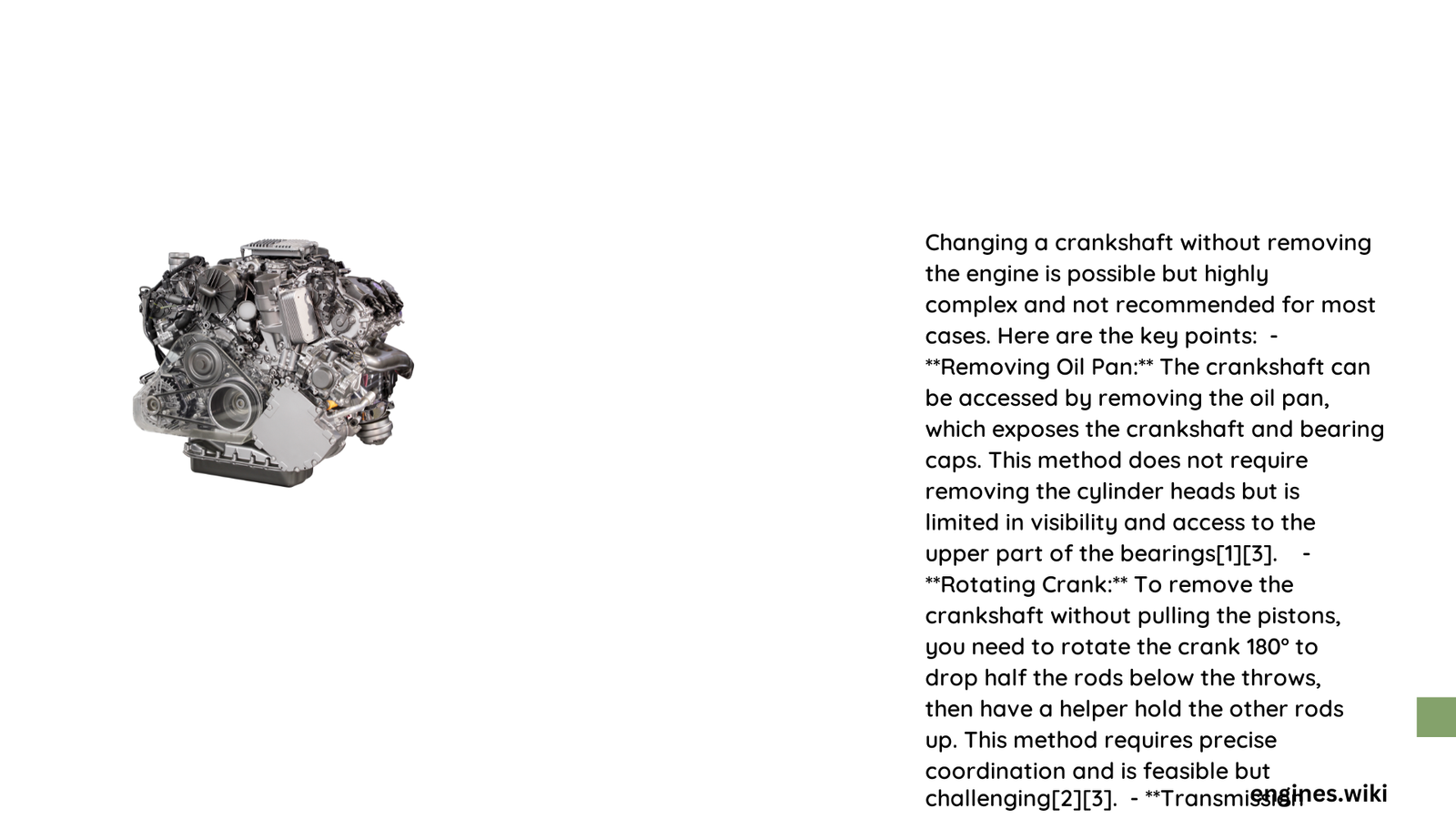Replacing a crankshaft without completely removing the engine is a complex but achievable task for experienced mechanics. This intricate process requires specialized tools, technical knowledge, and meticulous precision. While challenging, it can save significant time and labor costs compared to full engine extraction, offering a strategic alternative for automotive repair professionals and skilled DIY enthusiasts who understand the mechanical intricacies involved.
What Makes Crankshaft Replacement Possible Without Engine Removal?
Crankshaft replacement without engine extraction depends on several critical factors:
Can You Access the Crankshaft Easily?
Accessibility is the primary determinant. Some engine designs allow easier crankshaft access, making the replacement more feasible. Inline engines and certain configurations provide better working space compared to transverse or compact engine layouts.
What Tools Are Essential for Crankshaft Replacement?
| Tool Category | Specific Tools | Purpose |
|---|---|---|
| Lifting Equipment | Engine Hoist, Jack Stands | Stabilize and support vehicle |
| Removal Tools | Socket Set, Torque Wrench | Disassemble connected components |
| Precision Instruments | Micrometer, Dial Indicator | Measure bearing clearances |
| Specialized Equipment | Bearing Puller, Seal Installer | Remove and install critical components |
What Are the Preliminary Steps?
Before attempting crankshaft replacement, consider these crucial preparatory actions:
- Vehicle Preparation
- Park on a level, stable surface
- Disconnect battery
- Drain engine oil and coolant
-
Secure vehicle with jack stands
-
Component Removal Sequence
- Detach transmission
- Remove flywheel
- Extract timing components
- Drop oil pan
What Challenges Will You Encounter?
Potential obstacles during crankshaft replacement include:
- Tight working spaces
- Heavy component management
- Precise alignment requirements
- Risk of damaging surrounding components
- Need for specialized technical knowledge
How Complex Is the Replacement Process?
The complexity varies based on:
– Engine type
– Vehicle make and model
– Mechanic’s expertise
– Available tools
– Specific damage or wear conditions
What Are the Potential Risks?
Risks associated with crankshaft replacement include:
- Improper alignment
- Bearing damage
- Seal leakage
- Potential engine misalignment
- Increased wear on surrounding components
How Long Does the Replacement Take?
Estimated time ranges:
– Experienced mechanics: 8-12 hours
– DIY enthusiasts: 12-24 hours
– Complex engines: Up to 48 hours
What Are the Cost Considerations?
Cost factors include:
– Crankshaft price ($500 – $2,500)
– Labor (if professional)
– Additional replacement parts
– Tool investments
Conclusion

Changing a crankshaft without removing the entire engine is possible but requires advanced mechanical skills, precise tools, and comprehensive understanding of engine mechanics. Professional assessment is recommended for complex replacements.
Pro Tips
- Always measure and document bearing clearances
- Use high-quality replacement parts
- Follow manufacturer specifications
- Consider professional assistance if uncertain
Reference:
– SAE International Technical Papers
– Automotive Repair Guides
– Professional Mechanic Forums
